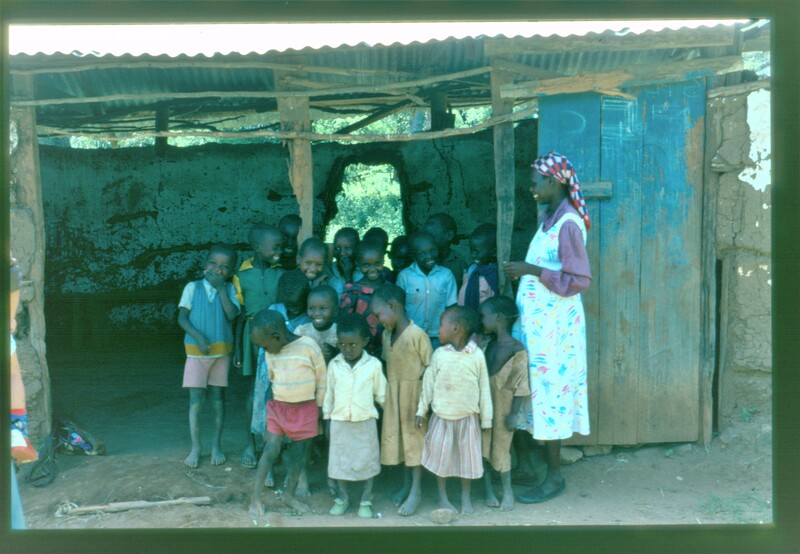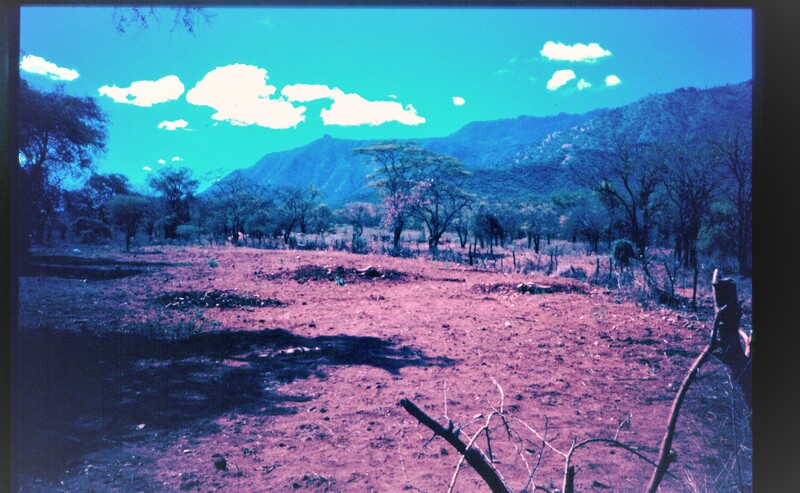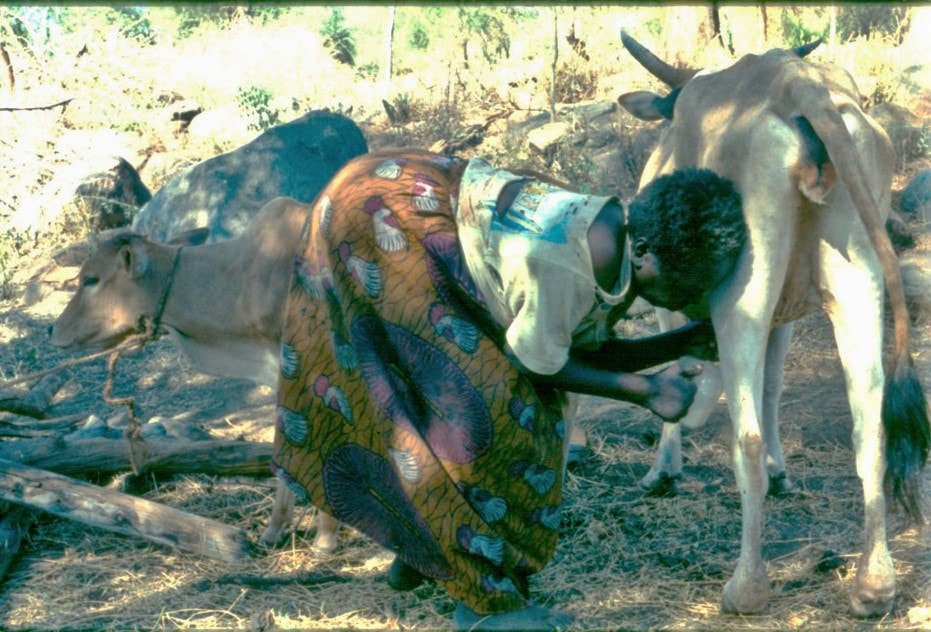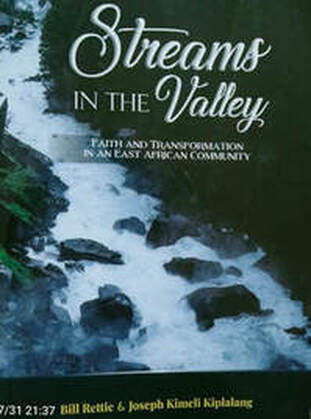A brief history of the Cheptebo Centre and the Kerio Valley
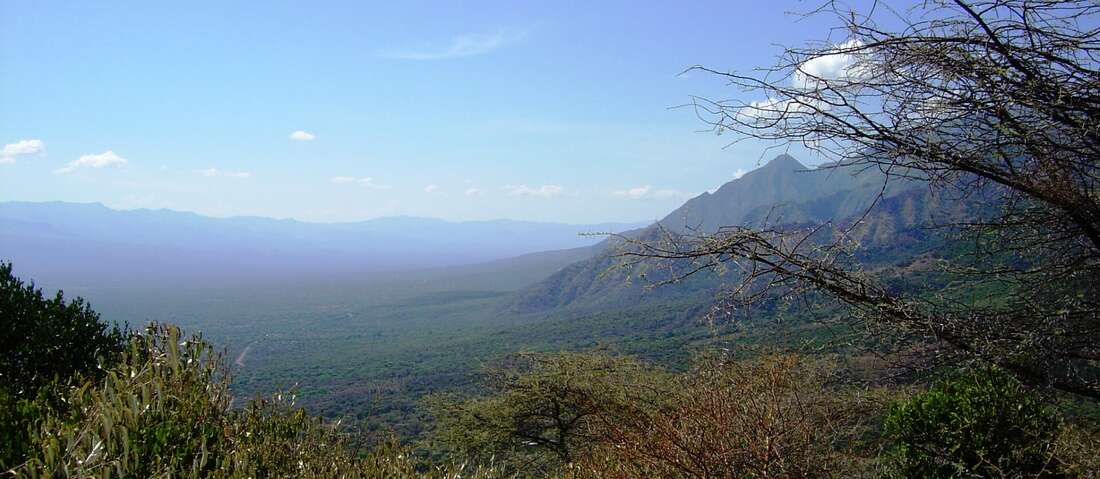
Traditionally the inhabitants of the southern Kerio Valley lived high up on the escarpment with the valley floor used only for the grazing of livestock. Living at higher altitude was cooler, less troubled by mosquitoes and therefore malaria and the people felt more secure from the frequent cattle raiding parties from across the Kerio River.
In the early 19th century the Kerio Valley experienced a mass migration of its inhabitants when many people left the valley to work on the white owned farms in the highlands. Outward migration peaked in the 1970s when most colonial farmers left and their farms were sold to local people. By the early 1980s the few people still living in the Kerio Valley were mainly pastoralists whose livelihood depended on local cattle and goats. Small patches of sorghum and millet was grown using a traditional slash and burn method. This fragile economic system is very vulnerable to the periodic droughts which affect the whole area. Crops would fail and there was often insufficient grazing for livestock, leading to large number of cattle dying and the population suffering famine conditions.
In the early 19th century the Kerio Valley experienced a mass migration of its inhabitants when many people left the valley to work on the white owned farms in the highlands. Outward migration peaked in the 1970s when most colonial farmers left and their farms were sold to local people. By the early 1980s the few people still living in the Kerio Valley were mainly pastoralists whose livelihood depended on local cattle and goats. Small patches of sorghum and millet was grown using a traditional slash and burn method. This fragile economic system is very vulnerable to the periodic droughts which affect the whole area. Crops would fail and there was often insufficient grazing for livestock, leading to large number of cattle dying and the population suffering famine conditions.
The church too had little impact in this area, with their main area of focus being in the highland areas surrounding the Kerio valley. A few Christian missionaries, notably the late Margaret Armstrong of AIM and Pastor Samuel Kogoi were the early pioneers who first came into the area bringing the Good News of the Gospel of Christ. Under their ministry some local people became Christians but churches remained very small and underdeveloped. African church workers were few and the task before them was overwhelming.
The Early Years
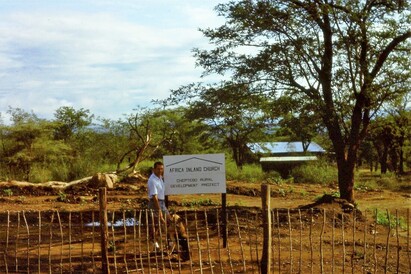
In the early 1980s Africa Inland Church leaders began to work towards a vision of establishing a significant Church based development programme for the southern Kerio Valley with the overall purpose of spiritual, social and economic development. A suitable area of land was donated by the local community to the church at Rokocho area of the then Cheptebo sub location. Financial assistance was requested from Tear Fund UK ( a UK based evangelical charity concerned with relief and development) and personnel for the initial development of the project from Africa Inland Mission International.
In 1986 Scottish missionary Bill Rettie was assigned by AIM International to serve at Cheptebo with the objective of establishing the centre and initiating development and training activities within the local community. Using Tear Fund funding a 4.2 kilometre pipeline was laid from a permanent water source on the escarpment to the project centre. This pipeline provided the first regular and reliable water suppy to both the centre and the wider community. The centre was then fenced and the first crop and livestock trials and demonstration started. From these very humble beginnings the work was to grow and expand into the impressive, multi component ministry which is found at Cheptebo today.
In 2003 Joseph and Sally Kimeli were appointed as the Centre's Director and Conference Manager respectively. They continue serving the Cheptebo Centre in these positions. As we look back to these many years, we are all humbled before God who has blessed His work for the glory of his Hame. We remember the small beginnings and that nothing is trivial in God's plan.
The year 2011 marked twenty five years since the mission work began at Cheptebo. These years of God's faithfulness have seen the project grow in this semi arid area which, from the perspective of many residents and foreigners alike, offered no hope except to relocate to high altitude areas. Today, this oasis of hope is an attestation that a semi arid lowland area such as Cheptebo can be as productive as the highlands and even more so.
Such could not have been experienced had it not been for the consistent, patient, diligence, prayerfulness and trust in God of the founder Bill Rettie and his wife Rosemary, serving with Africa inland Mission, who spent fourteen years at Cheptebo nurturing the project. Missionaries Bob and Ellen Hargraves and also Don and Diana Lunsden from the US made significant contributions to the early development of this work. The success of this venture is testimony to the partnership between national and expatriate workers who each brought unique gifts and skills which strategically contributed to the overall success of work.
Ps 115v1 "not to us, O Lord, not to us but to your name be the glory, because of your love and faithfulness"
In 1986 Scottish missionary Bill Rettie was assigned by AIM International to serve at Cheptebo with the objective of establishing the centre and initiating development and training activities within the local community. Using Tear Fund funding a 4.2 kilometre pipeline was laid from a permanent water source on the escarpment to the project centre. This pipeline provided the first regular and reliable water suppy to both the centre and the wider community. The centre was then fenced and the first crop and livestock trials and demonstration started. From these very humble beginnings the work was to grow and expand into the impressive, multi component ministry which is found at Cheptebo today.
In 2003 Joseph and Sally Kimeli were appointed as the Centre's Director and Conference Manager respectively. They continue serving the Cheptebo Centre in these positions. As we look back to these many years, we are all humbled before God who has blessed His work for the glory of his Hame. We remember the small beginnings and that nothing is trivial in God's plan.
The year 2011 marked twenty five years since the mission work began at Cheptebo. These years of God's faithfulness have seen the project grow in this semi arid area which, from the perspective of many residents and foreigners alike, offered no hope except to relocate to high altitude areas. Today, this oasis of hope is an attestation that a semi arid lowland area such as Cheptebo can be as productive as the highlands and even more so.
Such could not have been experienced had it not been for the consistent, patient, diligence, prayerfulness and trust in God of the founder Bill Rettie and his wife Rosemary, serving with Africa inland Mission, who spent fourteen years at Cheptebo nurturing the project. Missionaries Bob and Ellen Hargraves and also Don and Diana Lunsden from the US made significant contributions to the early development of this work. The success of this venture is testimony to the partnership between national and expatriate workers who each brought unique gifts and skills which strategically contributed to the overall success of work.
Ps 115v1 "not to us, O Lord, not to us but to your name be the glory, because of your love and faithfulness"
|
The history of the Cheptebo Centre is now available in book form.
|
Streams in the Valley traces the development of the Cheptebo Centre over its 35 year history. Written by the Centre's Founder and the current Centre Director, it records the impact of the transforming power of the Gospel in changing a neglected and impoverished community to one where the land now yields bountiful harvests, a community is released from a crippling dependency on aid and a new spirit of optimism and purpose is spreading among the people.
|

